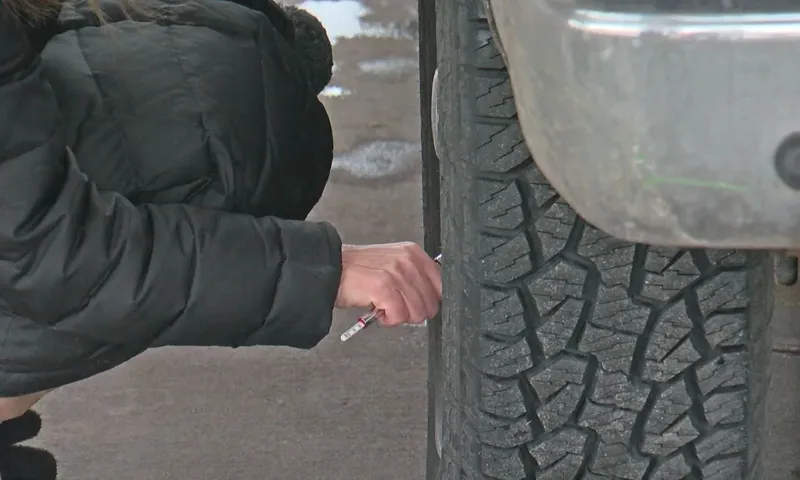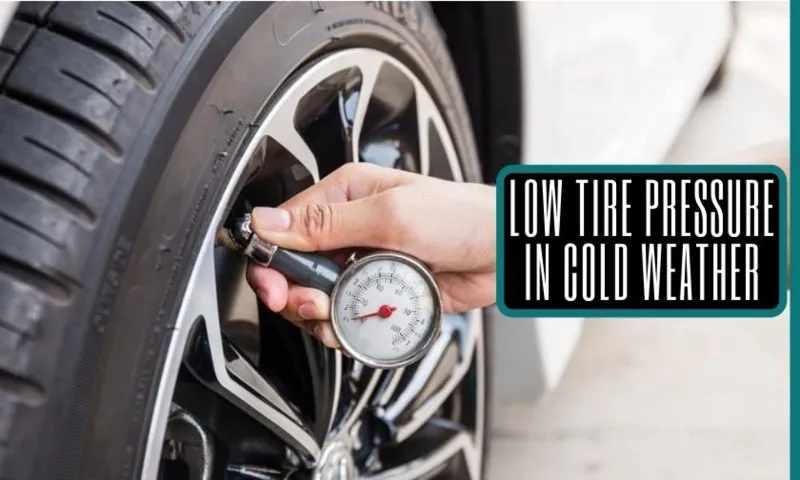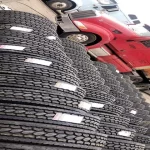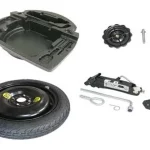Have you ever wondered why your car’s tire pressure seems to decrease in cold weather? It’s a common experience for many drivers, and it can be perplexing to see your tire pressure sensors light up when the temperature starts to drop. But why does this happen? Well, it’s all about the laws of physics. As temperatures drop, the air inside your tires contracts, which leads to a decrease in tire pressure.
This happens because the molecules inside the tire begin to move more slowly, causing them to take up less space and resulting in a lower overall pressure. To put it into perspective, think of a balloon that you leave in the freezer overnight. When you take it out, you may notice that it has deflated slightly.
This is because the colder temperature caused the air inside the balloon to contract, reducing the amount of air inside and thus decreasing the pressure. The same principle applies to your car’s tires. When the temperature drops, the air inside the tires contracts, resulting in a decrease in tire pressure.
This is why it’s important to check your tire pressure regularly, especially during the winter months. Proper tire pressure is essential for optimal driving performance and helps keep you safe on the road. So, next time you see your tire pressure sensors light up on a cold day, don’t panic! It’s just the laws of physics at work.
Regularly checking your tire pressure and keeping it at the recommended level will ensure that your car performs at its best no matter the weather conditions.
Table of Contents
Introduction
Have you ever noticed that your tire pressure drops when the weather gets colder? This is a common phenomenon that many drivers experience during the winter months. The reason behind this is that cold air is denser than warm air, which means that the air molecules in your tires condense and contract due to the temperature change. As a result, the tire pressure decreases, and you may see your tires appear slightly flatter than usual.
It’s essential to keep an eye on your tire pressure during the winter to ensure that your vehicle stays safe and performs well. So, if you notice that your tire pressure has decreased, it’s best to check it and fill it up to the recommended level to maintain optimal performance and safety on the road.
Explaining the Phenomenon of Tire Pressure Drop
Tire pressure drop is a common phenomenon that every vehicle owner experiences at some point. It is a natural process that occurs due to a variety of factors, which can lead to poor fuel economy, decreased tire life, and even compromised safety. Understanding the causes of tire pressure drop is crucial to maintaining optimal performance and safety on the road.
In this blog section, we will explore the various reasons for tire pressure drop and how to prevent it. Let’s dive into the details to find out what causes this problem and how to fix it.

How Temperature Affects Tire Pressure?
Have you ever noticed that your tire pressure seems to go down when the weather gets colder? Well, you’re not alone! This is an extremely common occurrence in colder climates, and there’s a good reason for it. The air inside your tires is made up of molecules that move around more slowly in colder temperatures. This means that the air pressure inside your tires decreases as the temperature drops.
So, if you notice that your tire pressure is lower in cold weather, it’s not because your tires have a leak or are defective – it’s simply a result of the physical properties of the air inside your tires. It’s important to keep an eye on your tire pressure during the colder months to ensure that you’re driving safely and maintaining optimal performance and efficiency. Regularly checking your tire pressure and adjusting it as necessary can help extend the life of your tires and improve your overall driving experience.
Remember, it’s always better safe than sorry, so take the time to check your tire pressure regularly, especially during the winter months!
Describing Ideal Tire Pressure & Temperature
Tire Pressure When it comes to tire pressure, temperature plays a crucial role. As the temperature outside changes, so does the tire pressure. For every 10-degree Fahrenheit increase in temperature, the tire pressure increases by 1 psi (pounds per square inch).
Conversely, for every 10-degree Fahrenheit decrease in temperature, tire pressure decreases by the same amount. This means that during the warmer months, you may need to check your tire pressure more frequently to ensure that it is within the recommended range. On the other hand, during the colder months, you may need to add air more often.
It’s important to maintain the recommended tire pressure range for a few reasons. First and foremost, it helps with fuel efficiency, as properly inflated tires reduce rolling resistance and improve gas mileage. It also ensures that the tire wear is even, which can prolong the life of the tires.
In addition, overinflated or underinflated tires can affect handling, braking, and safety on the road. In summary, temperature greatly affects tire pressure, and it’s important to regularly check and maintain your tire pressure within the recommended range for optimal performance, fuel efficiency, and safety.
What Happens to Air when Temperatures Drop?
Have you ever noticed that your tire pressure goes down in cold weather? Well, you’re not alone. It’s actually a common phenomenon that occurs because of the way air behaves when temperatures drop. As the temperature drops, the air molecules in your tire start to move slower, causing the pressure inside the tire to decrease.
This is because when molecules move slower, they take up less space, resulting in less pressure. Think of it like a balloon – when you squeeze it, the air inside becomes more compressed, causing it to become harder. When the temperature drops, the air molecules inside your tire become more squeezed, causing the pressure to decrease.
So next time you notice your tire pressure dropping in cold weather, know that it’s just a natural occurrence caused by the behavior of air molecules.
Understanding the Physics Behind Tire Pressure
Tire Pressure When temperatures drop, the air inside your car’s tires contracts, causing a drop in tire pressure. This is because the cold air takes up less space than warm air, and as the temperature drops, the pressure inside the tire decreases. It’s important to keep an eye on your tire pressure during the colder months, as low tire pressure can lead to decreased fuel efficiency and increased wear and tear on your tires.
One way to combat this is to check your tire pressure regularly and add air as necessary. It’s also important to mention that overinflated tires can be just as dangerous as underinflated tires, as they are more prone to blowouts in extreme temperatures. So, make sure you’re filling your tires to the recommended pressure levels, and you’ll be helping to ensure a safe and smooth driving experience all year round.
Why is This Problem More Pronounced in Winter?
Have you ever noticed your tire pressure drops in the winter? There’s a logical explanation for this. As the temperature drops, so does the air pressure inside your tires. The colder the weather, the lower the tire pressure will be.
This happens because the air inside the tire contracts as the temperature drops, leading to a decrease in pressure. In fact, for every 10 degrees Celsius drop in temperature, the tire pressure can decrease by around 1 psi. This may not seem significant, but even a small drop in tire pressure can impact your car’s driving performance.
It’s essential to keep your tire pressure in check during the winter months to ensure optimal driving performance and to avoid accidents. So, if you’re experiencing low tire pressure during winter, there’s no need to be alarmed. It’s just a natural reaction to the cold weather, and a simple fix like adding some air to your tires will do the trick.
Factors Contributing to Further Drop in Tire Pressure
Tire pressure can be affected by a multitude of factors, causing it to drop even further in certain conditions. One of these is the cold temperatures that come with winter. This makes it particularly problematic for car owners, as tires that have already decreased in pressure are more liable to be affected by this seasonal dip.
The chilly air makes the tire’s air molecules move slower and closer, which then reduces the pressure. Additionally, the increased use of heating and defrosting mechanisms can drain the battery and put a greater load on the alternator, causing the tire pressure monitoring system (TPMS) to malfunction or misread the pressure levels. Winter tires, which tend to be more permeable than all-season tires, are also more susceptible to pressure loss because of their construction and the lower temperatures.
Therefore, it is even more crucial to ensure that your tires are properly inflated in the winter months to avoid unnecessary breakdowns or accidents on the road.
How to Prevent Tire Pressure Issues in Cold Weather?
Have you ever noticed that your tire pressure drops in colder temperatures? This can be a common issue among car owners, and it’s important to address it to prevent potential accidents and damage to your vehicle. The reason why tire pressure drops in cold weather is due to the laws of physics. Cold air takes up less space than warm air, so when the temperature drops outside, the air molecules in your tires become more compact.
As a result, the pressure in your tires decreases, leaving them underinflated. To prevent this from happening, it’s essential to check your tire pressure regularly and adjust it according to the specific recommendations set by your vehicle’s manufacturer. Additionally, you can consider investing in a tire pressure monitor that can alert you if your tire pressure drops below a safe level.
By taking these simple precautionary measures, you can prevent tire pressure issues and ensure a safe and smooth ride even in cold weather.
Useful Tips to Practice Safe Driving
As the colder months approach, it’s crucial to ensure that your car’s tire pressure is at its optimal level to prevent any potential issues. Cold weather can cause the pressure in your tires to decrease, which can affect your vehicle’s handling, fuel efficiency, and safety. You can prevent tire pressure issues by checking your tire pressure regularly and filling them up to the recommended level.
A reliable tire pressure gauge can help you ensure that your tires are at the right PSI. It’s also important to maintain your tire’s tread depth, as worn-out tires can create hazardous driving conditions in cold, wet weather. By having your tires rotated and balanced regularly, you can avoid uneven wear and ensure that your tires last longer.
Safe driving starts with maintaining your vehicle’s vital components, so take the necessary steps to prevent any tire pressure issues this winter.
Conclusion – Stay Safe and Be Proactive
In conclusion, the reason why your tire pressure goes down in cold weather can be explained using a simple scientific principle called Charles’s Law. As the temperature drops, the air molecules inside your tire start to slow down and move closer together, causing a decrease in pressure. But fear not, with regular tire checks and proper inflation, you can keep your ride rolling smoothly through even the chilliest of seasons.
After all, a little air goes a long way!”
FAQs
Why does tire pressure decrease in cold weather?
Tire pressure decreases in cold weather because the air molecules in the tire contract, leading to a decrease in tire pressure.
How much does tire pressure decrease in cold weather?
It’s common for tire pressure to decrease by 1-2 pounds per square inch (PSI) for every 10-degree drop in temperature.
Can cold weather cause a flat tire?
Yes, cold weather can contribute to a flat tire if the tire pressure is already low and decreases further due to the cold temperature, increasing the risk of a puncture or blowout.
How often should I check my tire pressure in cold weather?
It’s recommended to check your tire pressure at least once a month in cold weather, as well as before long road trips or if you notice any changes in handling or performance.
Can overinflating tires help prevent pressure loss in cold weather?
Overinflating tires can actually worsen the effects of cold weather, as it increases the pressure inside the tire that can lead to a higher risk of a blowout or other issues.
Will warmer weather automatically increase my tire pressure?
Yes, warmer weather can cause an increase in tire pressure as heat expands the air molecules in the tire, leading to more pressure.
How do I properly inflate my tire in cold weather?
Use a tire pressure gauge to check the recommended PSI level for your tire, and fill it with air using an air compressor or gas station air pump, making sure not to overinflate the tire.




